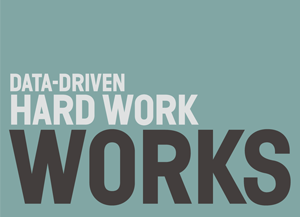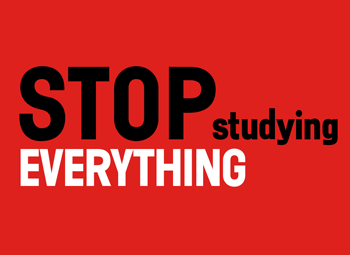 The Crown of the Moon by gilderic
Organizations too often overlook the hidden powers of e-mail marketing, a relatively inexpensive powertool if used correctly. As Gene Carr of Patron Technologies will tell you, a strong e-mail marketing plan is a critical component of your online presence. "Why? Because the average arts consumer doesn’t. . . go to an arts website to browse around to see what’s happening next Tuesday. [Now,] when they get an e-mail in their inbox, they say 'OH! That’s happening next Tuesday!' and they forward it to their boyfriend and they send it on. So I say, get your e-mail marketing program great, you’ll solve half your problems."
The Crown of the Moon by gilderic
Organizations too often overlook the hidden powers of e-mail marketing, a relatively inexpensive powertool if used correctly. As Gene Carr of Patron Technologies will tell you, a strong e-mail marketing plan is a critical component of your online presence. "Why? Because the average arts consumer doesn’t. . . go to an arts website to browse around to see what’s happening next Tuesday. [Now,] when they get an e-mail in their inbox, they say 'OH! That’s happening next Tuesday!' and they forward it to their boyfriend and they send it on. So I say, get your e-mail marketing program great, you’ll solve half your problems."
How do you do this?
I was fortunate to attend a great session at NAMP called "Beyond the Blast: E-Mail Marketing Well-Done" featuring a panel of Playwright Horizons' Bradford Louryk and The Book Report Network's Carol Fitzgerald, and moderated by Carr, who chatted with me for the blog. Following his "Three B's" I offer you some take-aways.
You must have a strong list to have an effective e-mail marketing campaign. Building a list can be challenging, and is often seen as secondary to other elements of the e-mail or newsletter (design, content, etc.)--but Carr argues that building the list should take 75% of your time. To collect e-mail addresses and learn what these individuals want to receive takes time and finesse, and involves regular (about thrice-yearly) follow-up surveys to define their interests and ensure that your messages are hitting their appropriate mark. If you are sending out one blanket e-mail to everyone on your list, you are blasting, and are likely seeing a low return on such messages. It also may decrease your revenue: "You won’t advertise a $5 ticket lottery to a full-season subscriber. You really have to think about who is getting what messages," reminds Louryk.
Exercise professionalism when managing your e-mail campaigns: "[p]lan a schedule in advance, get (the e-mail) proofread, get great graphics, send it to outside readers (to look it over before you send it to your lists). All the things that professional publishers do," explains Carr. "It doesn’t mean that your newsletter can’t be in a personal voice;" you should cultivate a specific tone and feel to make your organization accessible and relatable. Set the sender's name to appear as a person in the organization rather than the company's name. "But there better not be any typos in there and it better come on Tuesday if you say it’s going to come on Tuesday."
And don't underestimate the power of timing: your communication should be timed to coincide with reviews, published profiles, podcasts, etc. Driving traffic to other locations where your organization receives publicity demonstrates that you are connected and aware of how your organization is being represented and perceived.
Once you have determined who your segmented audiences are and established how your campaign will be structured (once monthly newsletters? event-specific?), remember that every recipient will read the subject line of your e-mail. 100% of them. Their decision to open the e-mail is based on what they get from that subject line. So be engaging, intriguing, exciting--but exercise caution. A "tantalizing" subject may get filtered as spam.
Within the message, Louryk stresses the importance of representing your organization's mission, expressing its urgency and importance. Integrate your logo but vary the colors, designs, header graphics to reflect the particular content of each message. Remind your audience who you are and why they support you.
Everyone wants to feel like an insider. People want to catch a behind-the-scenes glimpse of the inner workings of an arts organization. This may take the form of staff blog entries, artist personal stories, backstage video tours, or any number of personal touches that will give your audience a taste of the other side. Fitzgerald regularly shares personal stories with organizational information, authors of featured books write newsletters, and readers keep reading. Newsletters are not just about the sale, but about making connections. The more your audience feels a vested interest in what your organization is doing, the more they are to come around in real life. Give them the opportunity to receive special discounts, participate in lotteries, and get additional details beyond the website--and acknowledge those who open every e-mail with personalized thank-yous.
Don't despair if your organization already has established an e-mail marketing program that is less-than-effective, Carr is confident that that is not a death knell if you are prepared to put in a little work, figure out what makes you unique, and what your recipients want to read.
"We have an e-mail newsletter that goes out to seven- or 8000 arts managers every month. We’ve been doing this for eight years. And about a year ago we started sending an interview, first it was an interview format, then we switched it to a video format. And we were spending a lot of time taping the person and then editing it, and the open rates were abysmal. Terrible, really terrible. And we were, depressed, we spend all this time, and (each interviewed person) was really excited, and nobody was opening it. So we threw out the interviews, rethought the content, and started writing about things we knew people were interested in: Facebook and Twitter, started putting contests in and quoting from clients and just totally reinvented the content. And the open rates jumped." The lesson? "Basically the reason people are tuning out is because YOU’RE BORING. The content that you send is what you’re about. It’s almost like you’re a magazine publisher and you don’t really pay attention to what is in the magazine. People are not getting your magazine because they like a bound thing showing up in their mailbox. People are tuning out because you’re not interesting."








